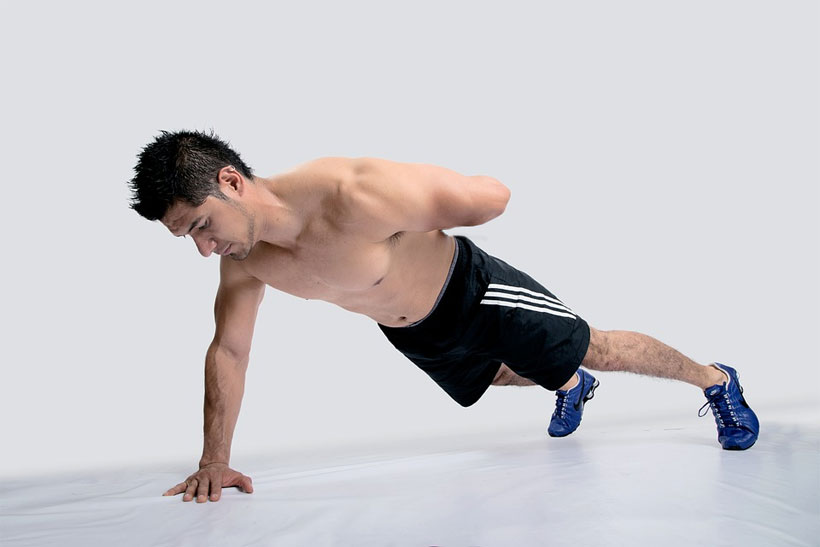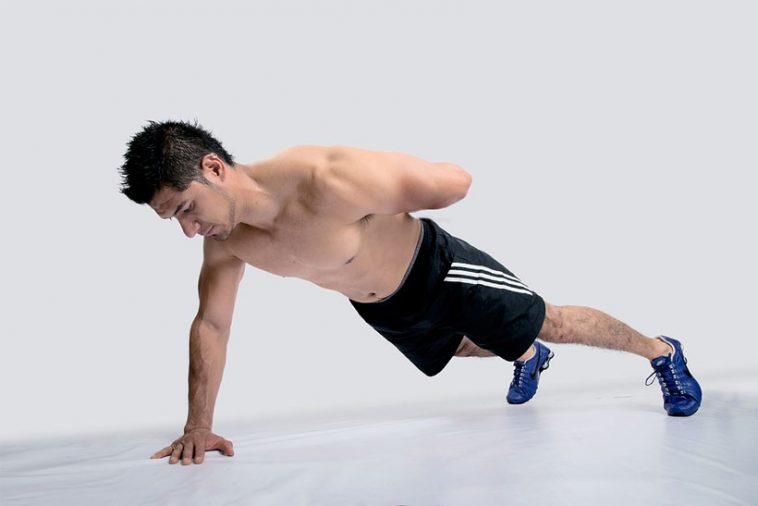- Like
- SHARE
- Digg
- Del
- Tumblr
- VKontakte
- Flattr
- Buffer
- Love This
- Save
- Odnoklassniki
- Meneame
- Blogger
- Amazon
- Yahoo Mail
- Gmail
- AOL
- Newsvine
- HackerNews
- Evernote
- MySpace
- Mail.ru
- Viadeo
- Line
- Comments
- Yummly
- SMS
- Viber
- Telegram
- JOIN
- Skype
- Facebook Messenger
- Kakao
- LiveJournal
- Yammer
- Edgar
- Fintel
- Mix
- Instapaper
- Copy Link
 If you’ve experienced an upper extremity (UE) amputation of one or both arms, you may be looking for adapted alternatives to the top arm toning exercises, and the average trainer may not know where to start.
If you’ve experienced an upper extremity (UE) amputation of one or both arms, you may be looking for adapted alternatives to the top arm toning exercises, and the average trainer may not know where to start.
Luckily, there are plenty of other resources that can help you learn the ropes. From online content made by other amputees and those with congenital limb deficiencies, like Amanda Tighe, who is an Equinox gym ambassador, to adaptive devices made just for working out. Here’s what you need to know…
Prosthesis Or Not?
Before you start exercising, the first thing you need to do is decide whether or not you’ll wear your prosthetic during your workouts. This will depend on several factors.
First, have you completed your rehabilitation? And if so, what is the state of your residual limb? Rehabilitation is necessary to shrink and shape the residual limb, and to desensitize it so that you can comfortably wear a prosthesis. Your physical therapist can also help you identify the muscles you’ll target in your workout through a myoelectric examination.
If you’re done with your rehabilitation, you’ll also need to consider what type of prosthetic you use and whether it’s suitable, with or without various adaptors, for arm workouts. Certain activities like weight lifting typically require a prosthetic adaptor so that you perform exercises that use two arms. Other activities can be more easily adapted so that you can exercise without any additional equipment.
Additional Equipment
In addition to determining whether you’ll use a prosthetic during your workouts, you’ll also want to consider what other equipment might enable you to complete your workouts.
Resistance bands are great for toning and strengthening the residual limb because they can be anchored to other equipment or with the legs, or even gently secured to the residual limb or prosthetic.
These exercises will also help promote and maintain range of motion in the shoulder joint, which is a common problem in UE amputees.
Resistance bands will let you perform most of the common exercises you would with barbells or free weights, such as tricep kickbacks, rowing motions, and overhead extensions. You may also be able to perform a variety of bodyweight exercises with form adjustments.
Watch Your Form
When you perform a bilateral arm exercise with two limbs, their equal length provides balance and helps you maintain proper posture. In UE amputees, however, posture and gait are often compromised because you favor the remaining limb, even if it was your non-dominant limb before.
Keep these postural irregularities in mind when working out and bring someone to spot you. If you don’t maintain proper form while working out, you could do more harm than good. And while your goal may be to strengthen your arms, it’s important that you spend plenty of time strengthening your core. While core strength is important for everyone, it’s especially vital for UE amputees and will allow you to hold different positions when exercising without lapsing into improper form and hurting yourself.
The Bottom Line
When it comes to exercising after an UE amputation, it’s not so much about what you can do but how you do it. With the right equipment and adaptations, you can perform just about any exercise – because disabilities are the barriers the world puts in front of you, not a reflection of your own capabilities.
About Shannon Clark
Shannon holds a degree in Exercise Science and is a certified personal trainer and fitness writer with over 10 years of industry experience.

